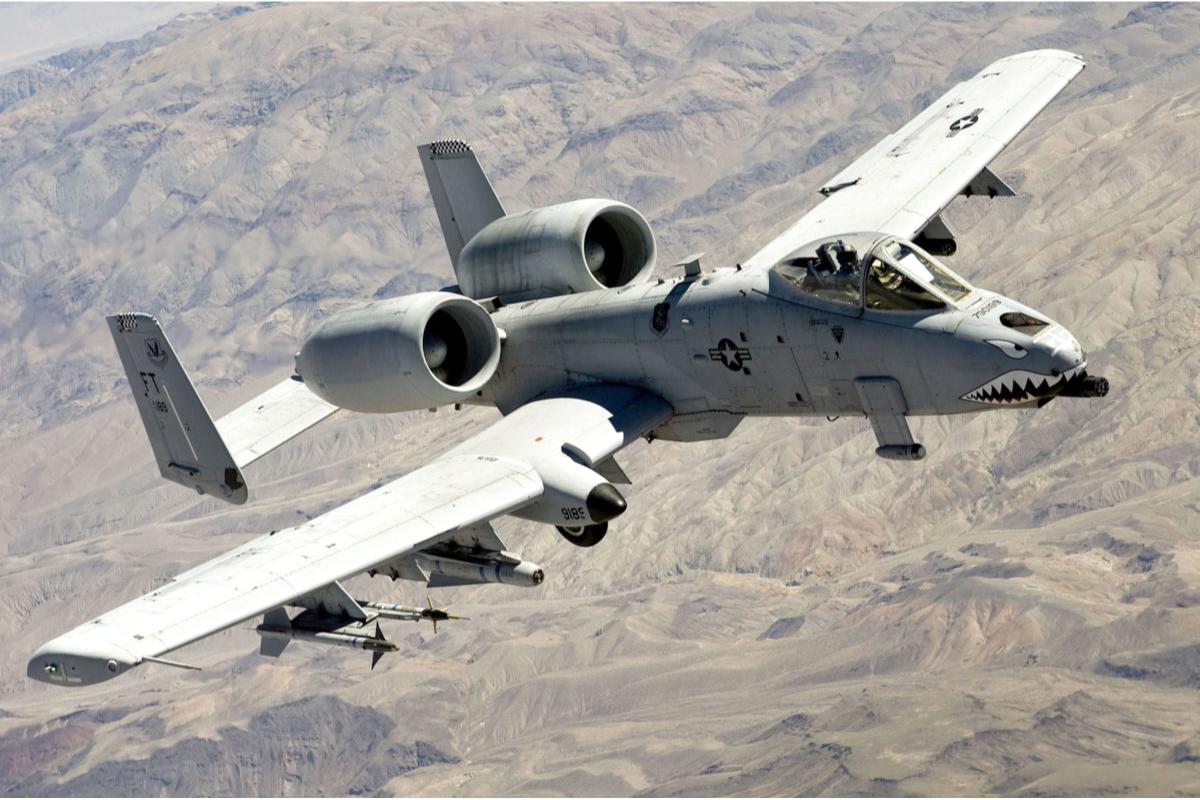Kimdu Technologies – Tensions with Iran, Russia have CENTCOM calling upon the venerable Warthog once again. A squadron of A-10 Thunderbolt II attack jets, specially modified to nearly triple their bomb loads, has been dispatched to the Middle East to boost U.S. airpower in the region amid increased tensions with Iran-backed forces in Syria.
The Warthogs will get software updates enabling them to carry up to 16 Small Diameter Bombs within weeks, said Lt. Gen. Alexus Grynkewich, who leads Air Forces Central Command.
“They’re really here as a message to both assure our partners…but also as…a true capability that can work against some of the threats that we face with respect to Iran,” Grynkewich said in an interview Thursday.
With each plane carrying four SDB bomb racks, a flight of four A-10s could bomb up to 64 ground targets, a nearly three-fold increase. Each plane can also carry laser-guided rockets along with its famed 30mm tank-busting gun.
“That’s a lot of targets that you can hit from an air-to-ground perspective,” Grynkewich said.
The rugged attack jet also gives commanders more flexibility because it can fly from short or dirt runways.
“We would be able to maneuver [the A-10] very rapidly to different locations and show an ability to do strike operations that really would be very difficult to counter in any meaningful way should things escalate,” he said.
In March, Gen. Michael “Erik” Kurilla, the head of U.S. Central Command, told lawmakers that he needed more airpower in the region. He testified that the A-10 deployment had been approved, but did not mention their new armament.
The A-10 joins two squadrons of F-16s under Grynkewich’s control.
“It’s a really good additive capability for the region,” he said. “What we have now allows us to maintain a reasonable, sustainable and sufficient posture.”.
Though the Pentagon’s presence in the region is a fraction of what it was during the Afghanistan and Iraq wars, U.S. forces are still fighting ISIS in Syria and helping the Iraqi military.
“You’ve got a fair amount of ISIS activity, including some senior leaders who want to reconstitute, and we’re just trying to keep the pressure on them to keep them from doing that,” Grynkewich said.
U.S. officials say Iranian-backed militia groups are also active in Syria, and occasionally attack American forces in the region. In March, a suspected Iranian suicide drone attack killed an American contractor was killed and injured five servicemembers at a base in northeastern Syria. Iran is also supplying suicide drones to Russia, which is using them to strike military and civilian targets in Ukraine.
“There’s a growing confluence between Russia and Iran, and I would argue with the Syrian regime as well, and that is manifesting in Syria as a challenge to our defeat-ISIS campaign and really just overall regional stability,” Grynkewich said.
The March attack accelerated the A-10 deployment, he said.
The A-10 could also be used to patrol the Strait of Hormuz, where Iranian go-fast boats have harassed warships and tankers.
“There certainly are maritime threats that are out there that are promulgated by the Iranians,” Grynkewich said. “The A-10 brings you a capability that can counter that, as well—kinetically if necessary with those rockets and the gun.”
Designed in the 1970s as a specialized ground-assault weapon, the A-10 has won the love of generations of infantry. Protected by a “bathtub” of cockpit armor, Warthog pilots fly slow and low, eyeballing their targets before ripping into them with copious armament. But Air Force leaders have spent decades trying to win Congressional permission to retire the twinjet. They call it a sitting duck for modern air defenses, and they say stealthier, higher-flying, more lightly armed fighter jets can do the job. Earlier this year, Chief of Staff Gen. CQ Brown said the last A-10s would be gone by decade’s end.
Grynkewich said the Air Force’s decision to retire the A-10 “makes sense, given where it is,” but added that the plane is still valuable right now in the Middle East.
“With the enhancements, we think it’s going to bring something to CENTCOM here for the next while that’ll be very useful from a deterrence perspective, or from a combat-employment perspective, should we need it,” he said.
In the meantime, Air Combat Command is continuing to keep the A-10 lethal. ACC worked with CENTCOM to double its loadout of Small Diameter Bombs, using software updates and extra bomb racks that are attached to the plane’s belly and wings.
The Air Force 422nd Test and Evaluation Squadron at Nellis Air Force Base, Nevada, recently tested modified A-10s with 16 of the bombs.
Weapon pylons on the A-10 that previously carried one 500-pound bomb can now carry four Small Diameter Bombs, according to Air Force officials. The 250-pound, satellite-guided SDB can glide much farther than the heavier 500-pound weapons. An A-10 dropped a live Small Diameter Bomb for the first time during a February test.
And there are plans to push the loadout to 24, Grynkewich said.
In addition to combat missions in Syria and Iraq, Air Forces Central plans to use the A-10 in exercises with partners in the region.
Grynkewich’s command is also responding to a call from CENTCOM’s Kurilla to be more innovative. Air Forces Central aims to experiment with the A-10’s ability to shoot down enemy drones. Since the A-10 lacks radar, officials plan to use a network of U.S. and allied radars to guide the attack jets to their uncrewed targets. The Warthog could then use its infrared targeting pod to engage a drone with heat-seeking missiles or laser-guided rockets, Grynkewich said.
“We’re in the experimentation phase, but conceptually, we think there’s a fair amount of promise,” he said. “The A-10 is going to be flying at a slower speed, which has a lot of advantages for when you’re going against one of these [drones]. We think that just that added capacity might provide us something really exciting in space.”
Source: Defenseone.com – By M. Weisgerber.





